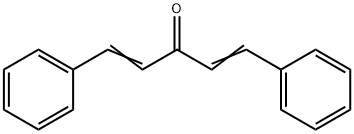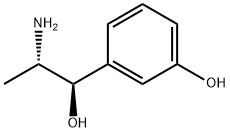N,N-Dibenzylhydroxylamine
- CAS NO.:621-07-8
- Empirical Formula: C14H15NO
- Molecular Weight: 213.27
- MDL number: MFCD00004772
- EINECS: 210-667-1
- SAFETY DATA SHEET (SDS)
- Update Date: 2024-12-18 14:15:32

What is N,N-Dibenzylhydroxylamine?
Chemical properties
white to slightly yellow adhering crystalline
The Uses of N,N-Dibenzylhydroxylamine
N,N-Dibenzylhydroxylamine, upon oxidation, yields N-benzyl-α-phenylnitrone, which can undergo cycloaddition reaction with suitable dipolarophiles. It can be used to synthesize N,N,O-trisubstituted hydroxylamines and arylamines.
Preparation
A mixture of 14 gm (0.202 mole) of hydroxylamine hydrochloride and 50 gm (0.395 mole) of benzyl chloride in 200 ml of 70% ethanol is treated with 60 gm of crystalline sodium carbonate. The mixture is heated under a reflux condenser for 2 hr, cooled to room temperature, filtered, and the solids discarded. The filtrate is treated with sufficient ice water to cause precipitation of A^N-dibenzylhydroxylamine. The reaction mixture is then thoroughly cooled in a freezing mixture to permit complete precipitation of product to take place. The yield, upon filtration, is 26 gm (61.5%), m.p. 123°C. A similar preparation has recently been reported [13a].

Properties of N,N-Dibenzylhydroxylamine
| Melting point: | 125-128 °C (lit.) |
| Boiling point: | 353.27°C (rough estimate) |
| Density | 1.0439 (rough estimate) |
| refractive index | 1.5300 (estimate) |
| storage temp. | Inert atmosphere,Store in freezer, under -20°C |
| Water Solubility | Insoluble in water |
| form | powder to crystal |
| pka | 13.19±0.69(Predicted) |
| color | White to Almost white |
| BRN | 978234 |
| CAS DataBase Reference | 621-07-8(CAS DataBase Reference) |
| NIST Chemistry Reference | Hydroxylamine, n,n-dibenzyl-,(621-07-8) |
| EPA Substance Registry System | Benzenemethanamine, N-hydroxy-N-(phenylmethyl)- (621-07-8) |
Safety information for N,N-Dibenzylhydroxylamine
| Signal word | Warning |
| Pictogram(s) |
 Exclamation Mark Irritant GHS07 |
| GHS Hazard Statements |
H315:Skin corrosion/irritation H319:Serious eye damage/eye irritation H335:Specific target organ toxicity, single exposure;Respiratory tract irritation |
| Precautionary Statement Codes |
P261:Avoid breathing dust/fume/gas/mist/vapours/spray. P264:Wash hands thoroughly after handling. P264:Wash skin thouroughly after handling. P271:Use only outdoors or in a well-ventilated area. P280:Wear protective gloves/protective clothing/eye protection/face protection. P302+P352:IF ON SKIN: wash with plenty of soap and water. P305+P351+P338:IF IN EYES: Rinse cautiously with water for several minutes. Remove contact lenses, if present and easy to do. Continuerinsing. |
Computed Descriptors for N,N-Dibenzylhydroxylamine
New Products
Tert-butyl bis(2-chloroethyl)carbamate 4-Methylphenylacetic acid N-Boc-D-alaninol N-BOC-D/L-ALANINOL 3-Morpholino-1-(4-nitrophenyl)-5,6-dihydropyridin- 2(1H)-one Furan-2,5-Dicarboxylic Acid Tropic acid 1,1’-CARBONYLDIIMIDAZOLE DIETHYL AMINOMALONATE HYDROCHLORIDE R-2-BENZYLOXY PROPIONIC ACID 1,1’-CARBONYLDI (1,2-4 TRIAZOLE) N-METHYL INDAZOLE-3-CARBOXYLIC ACID (2-Hydroxyphenyl)acetonitrile 4-Bromopyrazole 5-BROMO-2CYANO PYRIDINE 5,6-Dimethoxyindanone 5-broMo-2-chloro-N-cyclopentylpyriMidin-4-aMine 2-(Cyanocyclohexyl)acetic acid 4-methoxy-3,5-dinitropyridine 2-aminopropyl benzoate hydrochloride 1-(4-(aminomethyl)benzyl)urea hydrochloride diethyl 2-(2-((tertbutoxycarbonyl)amino) ethyl)malonate tert-butyl 4- (ureidomethyl)benzylcarbamate Ethyl-2-chloro((4-methoxyphenyl)hydrazono)acetateRelated products of tetrahydrofuran








You may like
-
 621-07-8 Dibenzyl hydroxylamine 99%View Details
621-07-8 Dibenzyl hydroxylamine 99%View Details
621-07-8 -
 N,N-Dibenzylhydroxylamine 95% CAS 621-07-8View Details
N,N-Dibenzylhydroxylamine 95% CAS 621-07-8View Details
621-07-8 -
 N,N-Dibenzylhydroxylamine CAS 621-07-8View Details
N,N-Dibenzylhydroxylamine CAS 621-07-8View Details
621-07-8 -
 N,N-Dibenzylhydroxylamine CAS 621-07-8View Details
N,N-Dibenzylhydroxylamine CAS 621-07-8View Details
621-07-8 -
 1975-50-4 98%View Details
1975-50-4 98%View Details
1975-50-4 -
 14714-50-2 (2-Hydroxyphenyl)acetonitrile 98+View Details
14714-50-2 (2-Hydroxyphenyl)acetonitrile 98+View Details
14714-50-2 -
 118753-70-1 98+View Details
118753-70-1 98+View Details
118753-70-1 -
 733039-20-8 5-broMo-2-chloro-N-cyclopentylpyriMidin-4-aMine 98+View Details
733039-20-8 5-broMo-2-chloro-N-cyclopentylpyriMidin-4-aMine 98+View Details
733039-20-8